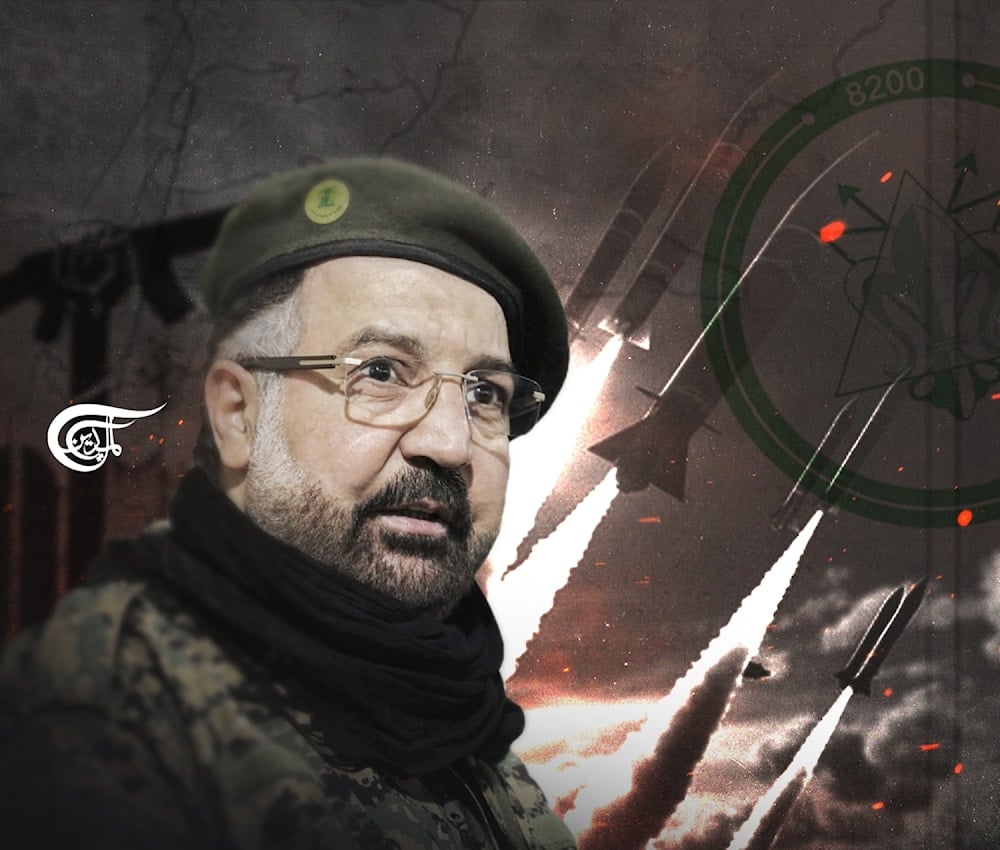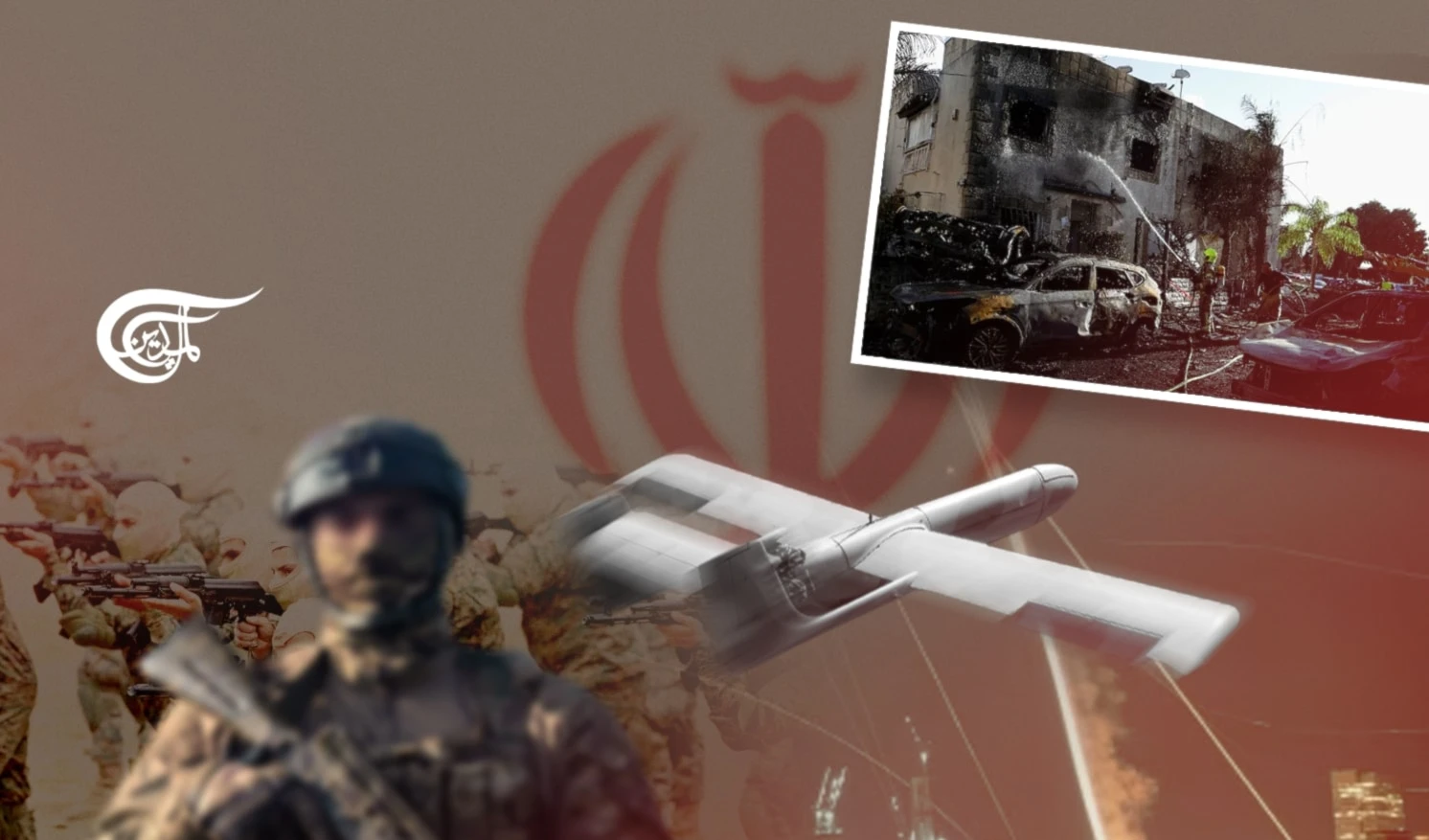What comes after Hezbollah’s retaliation to the Zionist entity's assassination in Beirut?
It was the first time in history that a non-state actor, Hezbollah, launched such an attack against a nuclear power, targeting one of its critical military sites in a suburb of its capital without being met with a response.
-

Hezbollah's attack was a well-thought-out reprisal, as promised (Illustrated by Mahdi Rtail; Al Mayadeen English)
On Saturday, July 30, 2024, Israeli occupation forces (IOF) assassinated Fouad Shokor, a senior Hezbollah commander, in what was deemed a major Israeli escalation in the ongoing war on Gaza. The air raid also killed three women and two children, while injuring many more. The IOF aggression violated the existing rules of engagement in its war with Hezbollah and crossed multiple red lines. It targeted Beirut, as well as civilian infrastructure, and the attack resulted in several civilian deaths.
Two days later, Hezbollah Secretary-General Sayyed Hassan Nasrallah promised in a televised speech supporters gathering for Shokor's burial that the Israelis would pay a high price for the unprecedented escalation since October 7, 2023.
Nasrallah stated that Hezbollah is considering a meaningful, well-thought-out reaction to the strike. The battle with “Israel” has "reached a new phase," and retaliation is "inevitable", he said, adding that a regional escalation will be determined by “Israel's” response to the impending retribution.
Just over three weeks later, at dawn on Sunday, August 25, the first phase of Hezbollah's retribution began. At 05:15 local time, Hezbollah forces launched a barrage of 340 Katyusha rockets at 11 IOF military installations in northern occupied Palestine. The goal of the first phase was to drown the Zionist Entity’s air defense systems and exhaust the Iron Dome protection system, clearing the door for the second phase of the reprisal operation. Then, tens of drones of all sizes were launched from both the south and north of the Litani River, as well as from additional launching points as far as the Beqaa Valley, bringing the operation to its second and last phase.
The primary targets of Hezbollah's operation were the Mossad headquarters in Glilot (north of Occupied Yafa) and the base of Unit 8200, a military intelligence unit for electronic espionage. Nasrallah confirmed in a speech later on Sunday that the drones hit their intended targets as planned.
Earlier, the IOF claimed to have carried out a pre-emptive air assault at 04:00 am using 100 fighter jets to prevent an impending missile and rocket attack. (Israeli) sources claimed that the IOF destroyed 5000 to 6000 rocket launchers.
Nasrallah refuted all IOF claims in his speech late on Sunday, saying that (Israeli) air raids had hit empty fields and valleys, and a few abandoned Hezbollah military bases. Only two rocket launchers were hit after the mission was completed, and all drone launching sites were unharmed, Sayyed Nasrallah affirmed in his speech. He stressed that the operation was a complete success, and all attended rockets and drones were launched as planned, hitting their intended targets, and only two Hezbollah fighters were martyred; a number considered minimal in such a large-scale operation. However, Sayyed Nasrallah added that Hezbollah would consider additional attacks on the Zionist entity if the results were not enough.
Sayyed Nasrallah's account of how the operation proceeded appears more credible than the Israelis' overblown assertions. Any reasonable assessment based on Katyusha launcher specifications and the number of soldiers necessary to operate each launcher would have concluded that about 850 Hezbollah fighters would have been killed were the Zionist entity's claims true! A number so big that it cannot be hidden in a small country and an open society such as Lebanon.
Soon after the retaliation operation was concluded, Hezbollah issued a statement saying that if the Zionist entity does not respond to the retaliation, the case will be closed. On its part, the Zionist entity signaled through a third party its decision not to escalate further, bringing the matter to a close, at least for the time being.
A few days later, sources close to Hezbollah verified to Al Mayadeen News Channel that at least six drones had successfully reached the Israeli Unit 8200 and delivered a precision hit on their designated targets.
Hezbollah's attack was a well-thought-out reprisal, as promised. It was not out of proportion to provoke the region into an all-out battle, which would have contradicted Hezbollah's strategy in the current situation. At the same time, it displayed Hezbollah's tactical capacity to conduct an effective strike roughly 150 kilometers deep within the occupied Palestinian territories in 1948 while evading "Israel's" multilayered air defense systems while being placed on full alert, not to mention defeating the significant US and NATO intelligence, surveillance, and reconnaissance support supplied to the IOF during this operation.
It was the first time in history that a non-state actor, Hezbollah, launched such an attack against a nuclear power, targeting one of its critical military sites in a suburb of its capital without being met with a response. This demonstrates Hezbollah's reasonable level of deterrence against the Zionist entity, as well as the regional "balance of power."
Hezbollah has effectively separated its response to Sayyed Fouad Shokor's assassination from its daily military attacks on the Gaza supporting front, allowing them to maintain that front operational as they see fit. This has averted the US and NATO engaging in a full-fledged regional war, which would have only helped Netanyahu. As a result, the IOF will be forced to continue fighting an attrition battle in northern Palestine until a Gaza truce is reached, which is central to Hezbollah's war strategy.
As we reflect on this particular episode of escalation, we can conclude that Hezbollah has carried out a meticulous show of power, aiming to demonstrate its military prowess, rather than causing extensive damage to the Zionist entity, which would have cornered it and forced it to escalate further, contradicting Hezbollah's strategy. This has served as a warning to the IOF, Pentagon, and NATO about what they will face if the north of Palestine front with Hezbollah opens up completely.
This display of might was similar to the one put out by the Islamic Republic of Iran against the Zionist Entity on April 14, 2023, in reaction to the airstrike on its consulate in Damascus on April 1.
So far, Hezbollah's goal in this battle has been clear: keep the antagonism in the north of Palestine under control. This enables Hezbollah to continue engaging the IOF in a battle of attrition with the goal of compelling the Zionist entity to negotiate a ceasefire on Palestinian Resistance terms. However, the success of this strategy remains to be seen in a war that does not appear to be ending any time soon.

 Amro Allan
Amro Allan
 6 Min Read
6 Min Read











